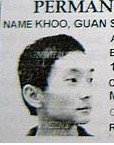The Bride Wore Red (1937)
Despite missing the first 18 minutes of the film, I am still able to piece together the set-up of this engaging Joan Crawford vehicle & appreciate its typical "Hollywood ending". Crawford plays an ambitious working class girl who impersonates a fictional socialite in order to catch a rich husband at a resort. Crawford’s Anni is introduced as a performer, maybe a dancer, at a club where opportunity came around in the form of a well-dressed older gentleman who probably burns Benjamins to light his cigars. This minor character is only the first of many to portray class distinction in “The Bride Wore Red”, a narrative about the pursuit of social class in a blissful community consisting of working peasants and wealthy guests. Perhaps, this is the Switzerland that Hollywood knew at the time.
an ambitious working class girl who impersonates a fictional socialite in order to catch a rich husband at a resort. Crawford’s Anni is introduced as a performer, maybe a dancer, at a club where opportunity came around in the form of a well-dressed older gentleman who probably burns Benjamins to light his cigars. This minor character is only the first of many to portray class distinction in “The Bride Wore Red”, a narrative about the pursuit of social class in a blissful community consisting of working peasants and wealthy guests. Perhaps, this is the Switzerland that Hollywood knew at the time.
The characters in the film, such as Giulio (Franchot Tone) and Rudi Pal (Robert Young of the “Canterville Ghost”) acknowledge the difference in social class at every turn; they do so with a smile. Crawford, fully in command of her allure, goes through a series of wardrobe changes that reflect her character’s social climbing progress, and also foretell her character’s turn at the conclusion with her charming and unabashedly low-cut, regional frock. The glimmering dress that screams “classy ‘ho” at the climax certainly lives up to the film’s title, even in monochrome. The height of her achievement in elevating her class status and deepening her self-hate, is represented by the flamboyant but cheap material tightly wrapped around her body.
The theme of the determined working girl marrying into riches reminded me of “I Know Where I’m Going” (1945), but the similarity ends there. “The Bride Wore Red” is neither comedic nor romantic; the lead character, the bride, schemes against a rich man and, above all, denies herself happiness in order to satisfy her prejudice against the have-nots. Being poor and not having money are two distinct situations, but Anni doesn’t quite figure this out. At the plot’s conclusion, Anni was shaped by circumstances, not her own mind. Crawford became a more active participant of her fate in “Mildred Pierce” (1945), a later film also about a working class woman, but her character was ultimately put in her own specific place in the social order.
http://us.imdb.com/title/tt0028661/
